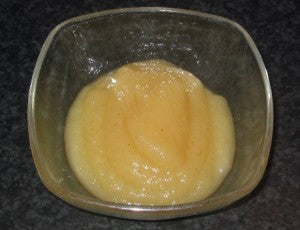Finding food substitutes is a part of any pursuit of a healthier life, but it is also a multilayered ordeal. There are plenty of vegan or vegetarian alternatives to animal products. Then, within that scope, there are substitutes that are healthier, and also many things to be done with our cooking that are plain better than the alternatives. Let’s start with some of the more common vegan replacements you may be looking for.
Vegan Substitutions
Milk
 Milk is easier to replace than you think, whether it be in cooking, baking, cereal, or a tall glass of refreshment. Almond, rice, and coconut milk are all good choices. Freshly made is always the best, but you can also buy them at health food and grocery stores. These come in natural, vanilla, or chocolate flavors depending on your needs or preferences. Soy milk is a less desirable vegan substitute due to its allergen and phytoestrogen content and with most soybeans being genetically modified in the United States.
Milk is easier to replace than you think, whether it be in cooking, baking, cereal, or a tall glass of refreshment. Almond, rice, and coconut milk are all good choices. Freshly made is always the best, but you can also buy them at health food and grocery stores. These come in natural, vanilla, or chocolate flavors depending on your needs or preferences. Soy milk is a less desirable vegan substitute due to its allergen and phytoestrogen content and with most soybeans being genetically modified in the United States.
Buttermilk
Simply add 1 tablespoon lemon juice to one cup almond, coconut, or rice milk, stir, and then let it stand for 30 minutes to thicken to make a buttermilk substitute. Soy works too, but, once again, you may want to avoid soy.
Cream
Coconut milk is an excellent replacement for heavy cream in recipes. Most of us automatically think sweet when coconut milk is mentioned because it is often used with fruits and sweeter dishes. It isn’t really sweet, but has a thick, creamy, rich flavor that works well in savory and sweet dishes. You can also blend one part cashews with one part water for a slightly sweeter cream.
Cheese
Crumbled tofu works well as a cottage or feta type cheese in recipes, but it will not melt and comes from soy. Nutritional yeast offers a yellow nutty cheesy flavor that can be sprinkled over vegetable tacos, on popcorn, or mixed with pasta sauce for a cheesy kick. You can buy vegan cheeses that are more similar to traditional cheese, but these are more expensive and more processed.
Butter
 Coconut oil provides the saturated fats we are used to and can be substituted directly for butter in most recipes. It is very healthy and delicious. One cup butter can be replaced with 2/3 cup oil in most recipes. Applesauce or prune puree works well in baking for a fiber rich alternative, especially in denser breads like zucchini and banana. Nut butter and avocado puree can also be used in place of butter. They provide the fat a recipe needs, though healthier fats, and are exceptional in things like chocolate icing where oil wouldn’t work.
Coconut oil provides the saturated fats we are used to and can be substituted directly for butter in most recipes. It is very healthy and delicious. One cup butter can be replaced with 2/3 cup oil in most recipes. Applesauce or prune puree works well in baking for a fiber rich alternative, especially in denser breads like zucchini and banana. Nut butter and avocado puree can also be used in place of butter. They provide the fat a recipe needs, though healthier fats, and are exceptional in things like chocolate icing where oil wouldn’t work.
Mayo
Avocado mash or puree works well in most applications that call for mayo. Try blending one with a touch of lime and olive oil for a creamy dressing or spread that blows mayo out of the water anyway.
Eggs
Eggs can be a little tricky to replace. They are used in different ways depending on the recipe. In baking they provide moisture, flavor, texture, color, emulsifying properties, and thickening agents. In some recipes eggs are used only as a binder to hold all the ingredients together.
Baking (1 egg) – 1/3 cup applesauce, 1/3 cup pumpkin puree, 1/2 small banana mashed, or 1 tablespoon ground flax mixed with 2 tablespoons water all replace one egg in baking. The banana and pumpkin will add flavor to anything you use them in. A 1/4 cup tofu blended with a few tablespoons of water also work if you like soy.
Binding – Mashed potatoes, bread crumbs, blended tofu, cooked rice or oatmeal, nutritional yeast, flaxmeal, tomato paste, nut butter, corn starch, or soy flour can be used in place of egg in any recipe that uses them for binding purposes.
 Ice Cream
Ice Cream
Banana ice cream offers the same creamy texture without all the added fats and sugars. Just blend frozen bananas. Add frozen berries or fruits for sweet sorbet flavors or nut butters and dark chocolate for a heartier, more decadent ice cream.
Honey
Maple syrup and coconut syrup make good alternatives to honey in any recipe. They have their own unique flavors though. Many vegans and vegetarians may still use honey.
Healthier Substitutions
Flour
Choose whole wheat over white wheat that has been stripped of fiber and nutrients. Cooked black beans can be used as flour in some baking recipes, like brownies, for extra protein and fiber. Nut flours are also higher in protein and fiber than regular flour, but be aware they do not rise. Coconut flour can be used to replace a portion of regular flour too. Just don’t go overboard with coconut or other gluten free flours, they can have a bitter aftertaste in larger doses and don’t always react the same as flour in recipes.
Sugar
Sugar is another thing that’s easier to replace than people think. Applesauce has about seven times fewer calories than sugar, but still provides sweetness to any recipe. Vanilla extract, cinnamon, and/or nutmeg can add sweetness and flavor to foods that don’t really require more sugar or to cut the amount of honey, maple, or coconut sugar you are using. Stevia is a calorie free sweetener derived from the leaves of an herb that is far sweeter than sugar, requiring very small amounts to be added to food.
Salt
Seaweed crumbled into dishes is a great alternative to salt. It has a strong salty flavor, but is fairly low in sodium and full of vitamins, minerals, and antioxidants. Sometimes salt isn’t needed when just looking for more flavors in food. This can be supplied by herbs and spices like garlic, onions, leeks, basil, oregano, or even citrus instead of large amounts of sodium.
 Rice
Rice
White rice, like white flour, has been stripped of fiber and nutrients. Choose brown rice over white. For more healthy alternatives to white rice, use quinoa which is richer in protein and antioxidants or cauliflower, grated and steamed, which is lower in calories and carbohydrates while providing a similar texture and a mild flavor.
Breads
Once again, choose whole wheat over white. The whole grains are better for your heart. Use whole wheat tortillas too, or use lettuce leaves instead for even fewer calories, carbohydrates, and fat. Replace croutons in salad with nuts for that crunch you desire while cutting sodium and carbohydrates. Rolled oats, crushed flax, or fiber cereal makes for a healthier alternative to bread crumbs. Pick vegetables over a pita for dips and hummus.
Pasta
You know the drill: choose whole grain over regular white pasta. Use quinoa in place of couscous for the same texture with more protein and nutrition and without the gluten or processed flour. Some vegetables make delicious pasta too. Zucchini can be cut into strips or ribbons and treated like spaghetti or lasagna, or even rolled and stuffed like cannelloni. Eggplant, cut thin and grilled, makes an excellent lasagna or cannelloni as well with a meaty texture and unique flavor. Spaghetti squash, when cooked and pulled through with a fork, produces thin spaghetti-like noodles with a sweet squash flavor that goes well with any pasta sauce.
Potatoes
Sweet potatoes are lower in carbohydrates and calories and richer in antioxidants and fiber than white potatoes. Turnips or cauliflower make a creamy, healthy alternative to mashed potatoes in general. Kale chips, lightly tossed in olive oil, herbs, and spices then baked, make a crispy replacement for potato chips that is high in iron, vitamins, and antioxidants. Popcorn, a whole grain, is another healthier alternative to chips. Lightly dust popcorn with herbs, garlic powder, citrus, or even cinnamon instead of oils and salt.
Beans
 Use dry beans over canned whenever possible. They take longer, soaking and boiling, but are lower in sodium and higher in nutrients than their canned kin. Canned foods also contain BPA, a known toxin that imitates hormones. BPA free cans aren’t any better. They use BPS, a nearly identical bisphenol molecule.
Use dry beans over canned whenever possible. They take longer, soaking and boiling, but are lower in sodium and higher in nutrients than their canned kin. Canned foods also contain BPA, a known toxin that imitates hormones. BPA free cans aren’t any better. They use BPS, a nearly identical bisphenol molecule.
Lettuce
There are more greens out there than iceberg and the greener the better. Choose arugula, romaine, spinach, kale, turnip greens, and/or dandelion leaves for more antioxidants, chlorophyll, minerals, and variety.
Tomatoes
Use fresh, organic varieties over canned when possible, especially when making sauces. Canned sauces are higher in sodium and sugar. Tomatoes also leech more BPA into them due to the high acidity. Pick up sauces and tomatoes in glass bottles when fresh aren’t in season or you need to make something more quickly.
Peanut Butter
Reach for natural nut butters, including peanut, in place of the processed brands. Many grocery stores make their own in-house or you can easily make them at home with a good blender and a little time.
Chocolate
Dark chocolate chunks make a healthy choice in trail mix instead of the candy-coated chocolates that often come mixed in commercially. Use cacao nibs in place of chocolate chips in cookies. A little dark chocolate can actually help you release stress and give your mood a boost, just go easy.
 Oatmeal
Oatmeal
Quinoa, mixed with almond milk and cinnamon, makes an even healthier hot breakfast that’s high in protein, fiber, and antioxidants.
Syrup
Pureed fruits heated in a sauce pan make a low calorie alternative to sugary syrups while providing antioxidants and valuable enzymes. For even more flavor add vanilla and/or cinnamon.
Cooking Methods
Use your oven or panfry food over deep frying foods to get less fat, calories, and cell damaging free radicals. Steam your food over boiling it to keep valuable nutrients inside those vegetables and for a crisper flavor. If you are boiling your food, it should be in soups and teas where you actually eat or drink the liquid parts where many nutrients end up.
Supplements
Not all supplements are vegan, vegetarian, or even healthy. You have to look closely at labels and learn to spot the hidden health risks. Most multivitamins use synthetics, which are not the same form we find in nature. Most proteins rely on whey, which can cause digestive problems, or soy, which is an allergen. Sunwarrior offers whole-food raw vitamins and vegetable protein from healthier sources like brown rice, hemp seed, and pea protein.





